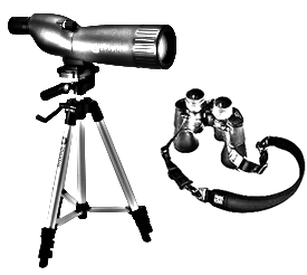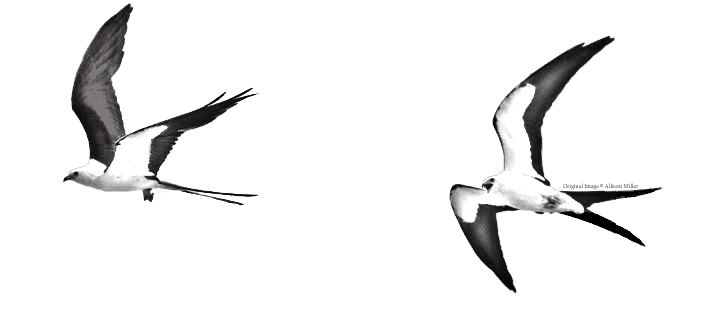Monitoring a Swallow-tailed Kite nest is fun and rewarding! The biggest commitment is your time, as finding the nest may take a few tries. However, if you are already aware of a nest location, you can start monitoring right away. You can also gather important data about human disturbance at the nest site and potential predator abundance by making careful observations during your monitoring visits.
Visits to the Nest

To monitor the nest, you need to make short visits, or nest checks, to determine the status of the nest at that time. The progression of the nest is categorized based on the activity. These categories are: building, incubating, brooding (chicks not visible), nestling (chicks visible), successful (i.e. likely to have fledged young), failed, and empty. For full descriptions of each of these stages, see Nest Checks.
The complete nesting cycle, from incubation to fledging, takes around 70 days. We recommend a nest check once every 7-10 days until the young fledge or the nest fails. This interval captures sufficient information while minimizing disturbance to the kites.
The main objective of nest monitoring is to determine the ultimate fate. As the chicks approach the age of fledging (38 days and later), you may want to visit the nest more often, maybe every other day. It is equally important, if the nest fails, to try to determine the cause of the failure. If you have permission and the ability to safely (i.e. not disturbing the kites) search around the base of the tree for evidence (e.g., a carcass, a large amount of feathers, a dislodged nest or nest parts, etc.), you may find some clues.
Good Etiquette
Once a nest has been discovered, find a good vantage point to return to for your nest checks. You may have to try different angles to find the best spot to watch the action. Please stay a respectable distance from the nest and use binoculars or a spotting scope, if available to you, to observe the nest activity. If the adults are continually calling at you while circling over your head, you are too close! Raising young is very energetically demanding for all birds, including Swallow-tailed Kites, so we want to minimize the amount of disturbance to the nest. Please keep in mind the adults are particularly sensitive during the building and incubation stages, and too much disruption could cause abandonment.

